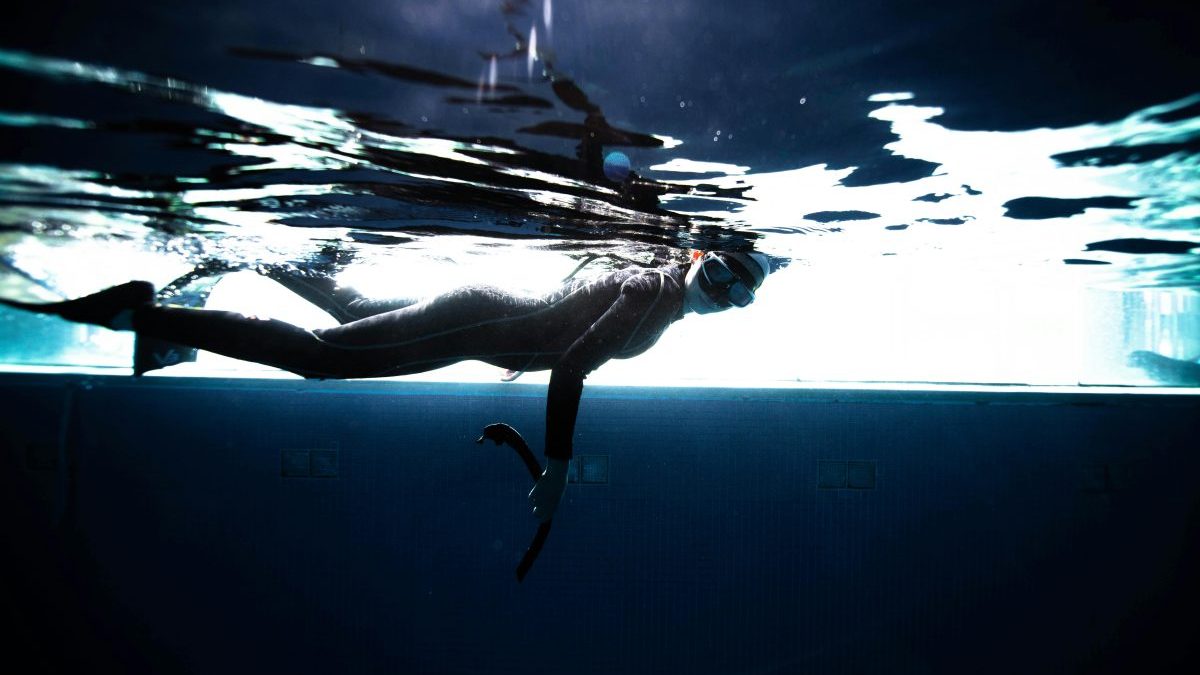Last Updated on: 14th July 2024, 09:32 am
Understanding Your Swimming Goals
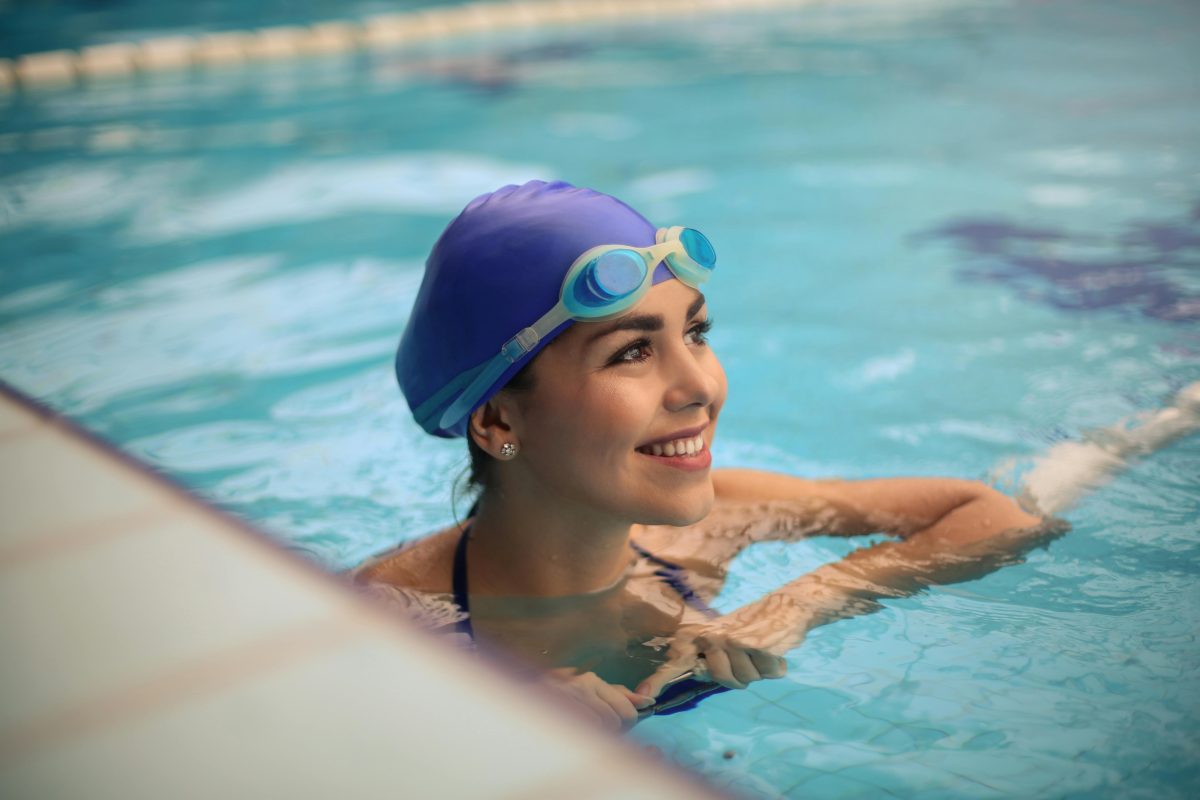
Embarking on a swimming journey begins with a clear vision. Whether you’re aiming to boost your fitness levels or compete at higher levels, pinpointing your objectives is crucial. It’s about setting the stage for success, right from the start.
- Tailoring your workouts becomes the next pivotal step. This means focusing on specific areas such as speed, endurance, or technique, depending on your personal goals.
- Setting realistic and achievable targets ensures that your journey is marked by milestones you can actually reach. This approach not only fosters a sense of accomplishment but also keeps motivation high.
- Remember, the journey to becoming a better swimmer is as much about understanding your goals as it is about achieving them.
The Importance of a Proper Warm-Up
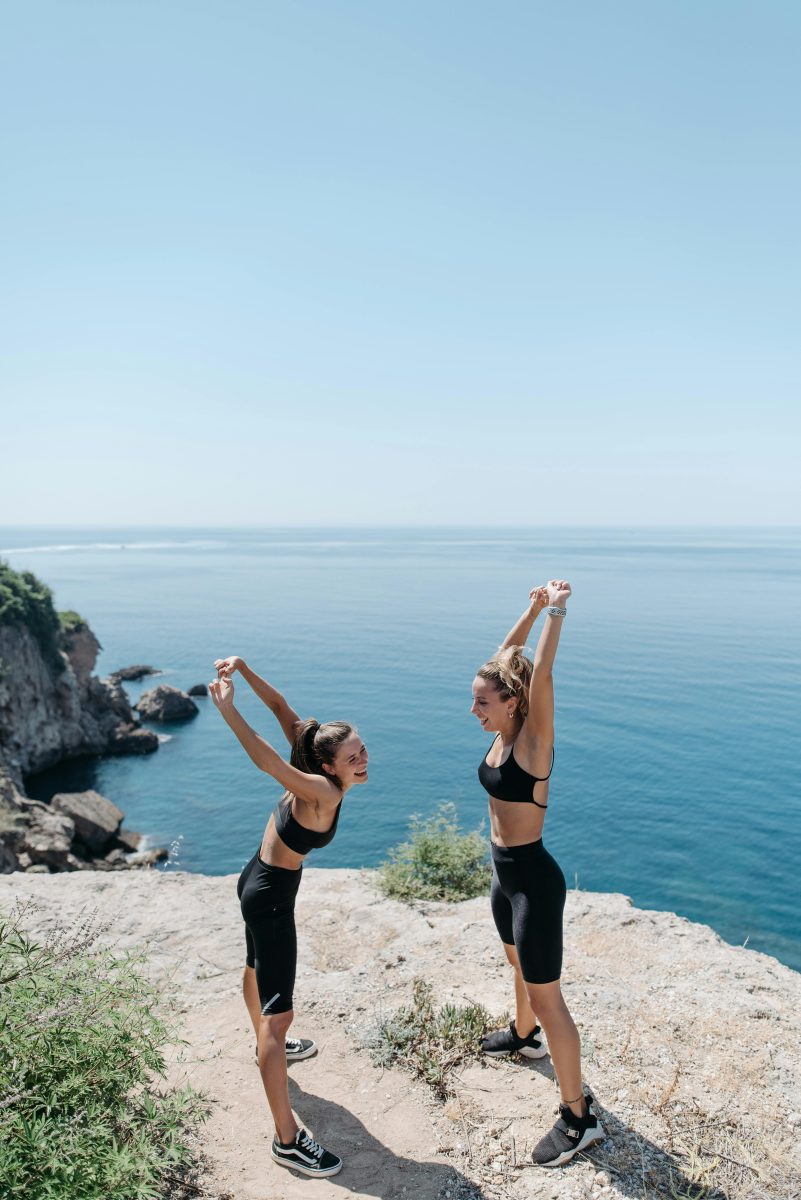
Before plunging into the depths of your workout, a proper warm-up sets the tone for success. It’s the prologue to your swimming saga, ensuring your body is primed and ready to tackle the challenges ahead.
- Dynamic stretches and light aerobic exercises form the cornerstone of an effective warm-up.
- Incorporating swimming drills at the onset further prepares your body, specifically tuning it for the aquatic environment.
- Remember, a proper warm-up is not just a preliminary routine; it’s an integral part of your swimming workout.
Structuring Your Swim Workout
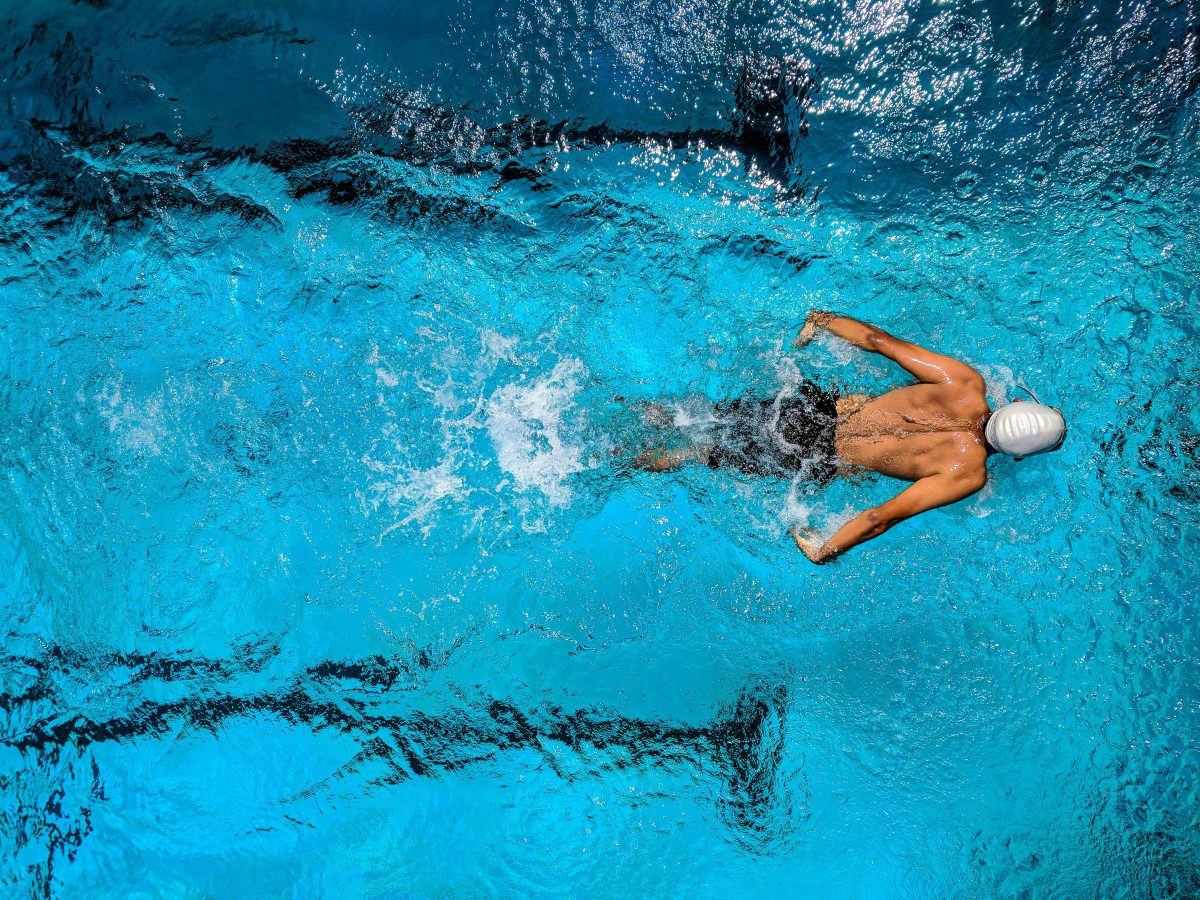
An effective swim session unfolds in three critical stages: the warm-up, the main set, and the cool down. Each plays a pivotal role in not just enhancing performance but also in injury prevention and recovery.
Designing the Main Set
- The heart of your swim workout, the main set, is where the magic happens.
- Intervals, with their high-intensity bursts followed by recovery periods, boost endurance and speed.
- A focus on technique ensures that every stroke is as efficient as possible.
Balancing Intensity and Recovery
- Striking the right balance between intensity and recovery is crucial.
- Recovery is just as important as the workout itself; it’s when your body heals, strengthens, and prepares for the next challenge.
The cool down, often overlooked, is essential. It gradually lowers your heart rate and relaxes your muscles, wrapping up your session on a gentle note.
Incorporating Different Strokes and Techniques

Integrating a variety of strokes into your swim workout is not just about variety; it’s a strategic approach to a balanced and comprehensive fitness regimen.
- Freestyle, known for its efficiency and speed, focuses on the shoulders, back, and core.
- Backstroke offers a reprieve for the chest muscles while intensively working the back, shoulders, and legs.
- Breaststroke, with its unique frog kick, targets the inner thighs, chest, and triceps.
- Butterfly, the most physically demanding stroke, engages the core, shoulders, and back.
By incorporating these strokes and focusing on technique drills, you not only diversify your workout but also ensure a balanced development of muscle groups.
The Role of Equipment in Swim Workouts

Swim workouts are not just about the water and your body. The right equipment can transform your training, making each session more effective and engaging. Paddles, fins, kickboards, and pull buoys are not mere accessories; they are tools that enhance your workout, each serving a unique purpose.
Paddles increase resistance, strengthening the upper body and improving stroke technique. They force you to focus on each pull, making your movements more deliberate and powerful. Fins, on the other hand, work your lower body, increasing leg strength and improving kick efficiency. They also help in developing speed and endurance, making every lap faster and more impactful.
Kickboards are invaluable for isolating the legs, allowing you to concentrate on your kick technique without worrying about arm movements. They also aid in building leg strength and endurance. Pull buoys, by immobilizing the legs, shift the focus to the upper body, enhancing arm strength and stroke efficiency. This equipment, when used correctly, can significantly improve your swimming performance.
However, safety and proper use are paramount. Always ensure that the equipment is suitable for your skill level and swimming goals. Incorrect use can lead to strain or injury, so it’s important to familiarize yourself with each tool and consult a coach if necessary. Remember, the goal is to complement your training, not compromise it.
Integrating these tools into your swim workouts adds variety, challenges your body in new ways, and helps break through plateaus. Whether you’re looking to improve your speed, endurance, or technique, the right equipment can make all the difference. Embrace these tools, and watch as they propel you closer to your swimming goals.
Monitoring Progress and Adjusting Your Workout
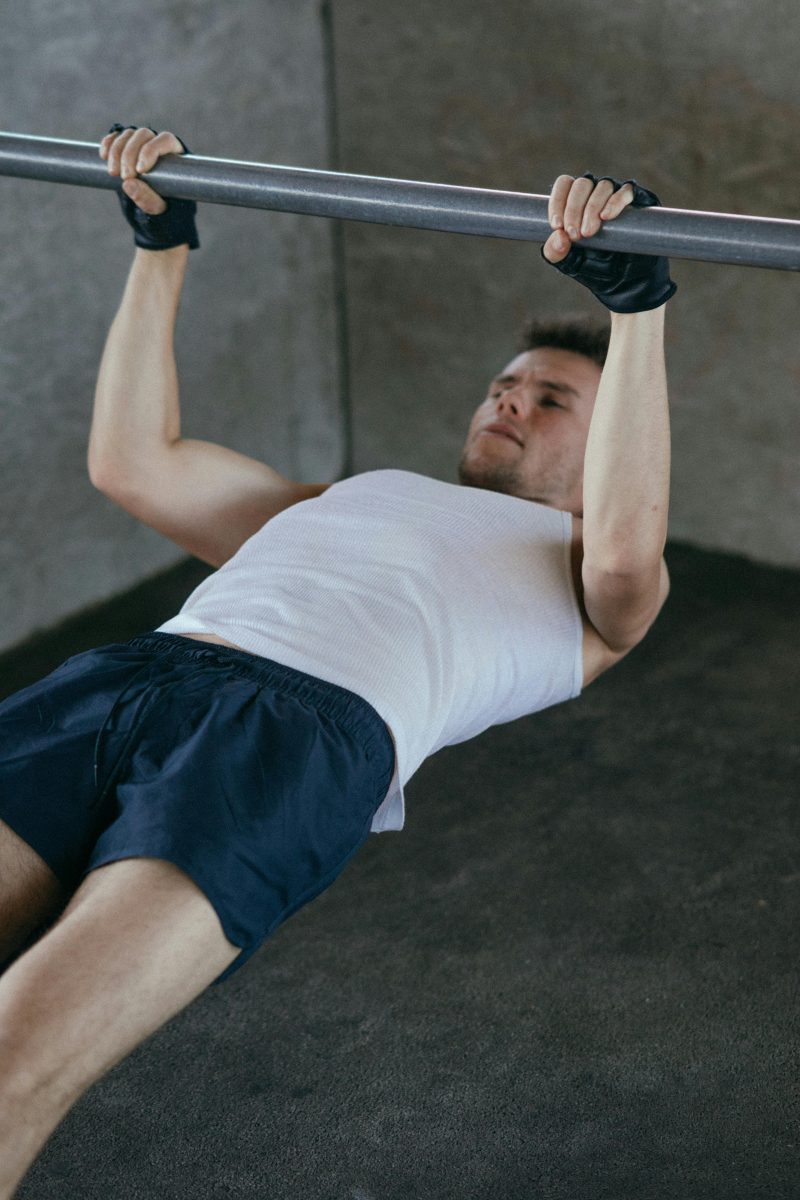
Keeping a detailed swim log is a game-changer. It’s a simple yet powerful tool that captures your journey, stroke by stroke. By tracking distances, times, and even your feelings, you create a tangible record of your progress. This log becomes your personal roadmap, highlighting triumphs and signaling when it’s time to recalibrate your efforts.
- Notice patterns: Speed may increase, endurance might improve, and your relationship with the water could evolve.
- Identify areas for improvement: Spot aspects of your swim that are lagging behind.
- Adjust your workout plan: Not a setback, but a strategy for success. Consider increasing distance, incorporating new drills, or adjusting rest intervals.
Remember, a swim workout is a living, breathing entity, not set in stone. It should evolve as you do, with each adjustment bringing you closer to the swimmer you aspire to be. Embrace the process of monitoring and adjusting, and watch as the waters ahead become a playground of potential.
Recovery and Nutrition: Key to Enhancing Your Swim Workouts
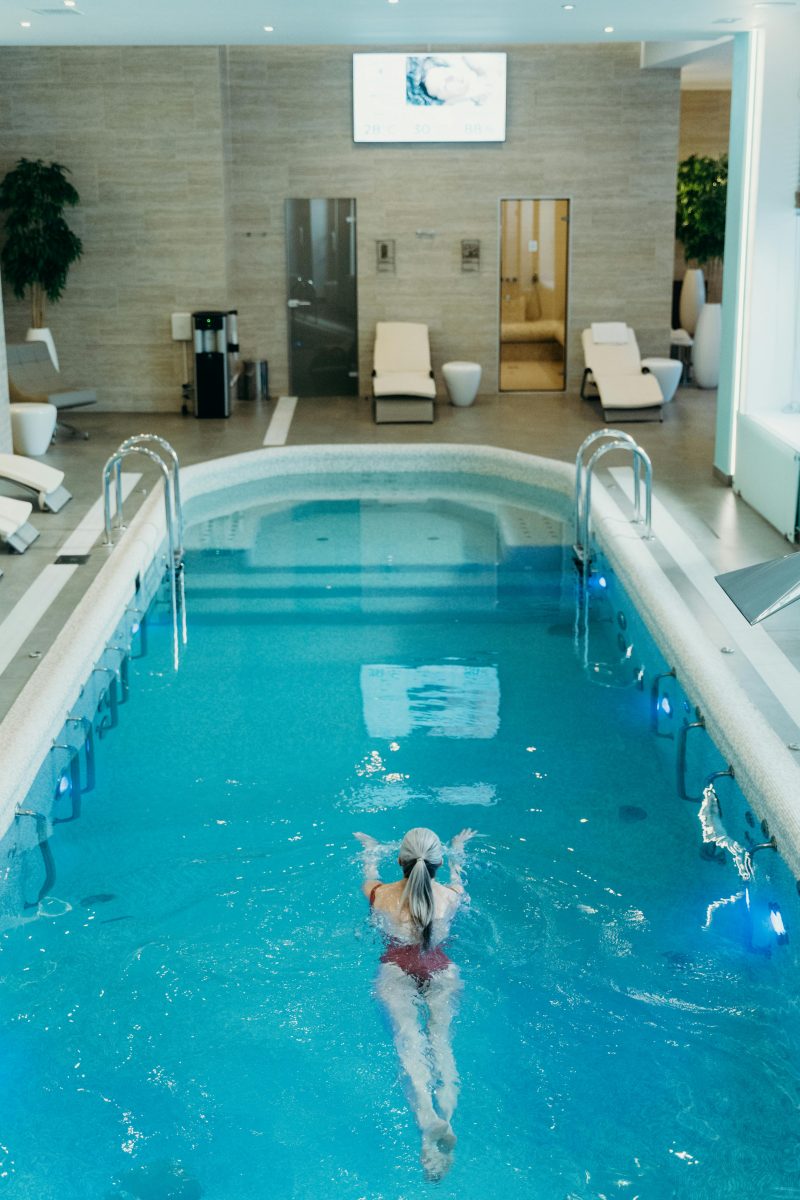
Post-swim recovery practices are not just beneficial; they are essential. They help your body repair and strengthen, preparing you for your next session. This includes stretching to alleviate muscle tension, and incorporating rest days into your routine to allow for full recovery. It’s about giving your body the time it needs to heal and adapt, ensuring continuous improvement and preventing injuries.
- Nutrition: Plays a pivotal role in your swimming performance and recovery.
- Before: Opt for a light meal or snack rich in carbohydrates and protein.
- During: Consider hydration drinks that replenish electrolytes.
- After: Focus on protein to repair muscles and carbohydrates to replenish energy stores.
- Hydration: Essential for optimal performance and recovery.
- Drink water throughout the day.
- Consider sports drinks during intense or prolonged sessions to maintain electrolyte balance.
By integrating these recovery and nutrition strategies into your routine, you’re not just swimming; you’re building a stronger, more resilient body capable of reaching new heights in the pool. It’s a holistic approach that enhances every aspect of your swim workouts, propelling you towards your goals with every stroke.
In Closing
Swimming transforms dreams into reality. It’s a journey of continuous growth and achievement. Through meticulous planning and strategic workouts, swimmers unlock their full potential, balancing the rigor of training with the rewards of improvement. This article has navigated the essentials of designing an effective swim workout, from setting goals and warming up to incorporating varied techniques and the right equipment, all underscored by the importance of recovery and nutrition. Embrace this holistic approach, and dive into the waters of success, where every stroke brings you closer to your aspirations.
Designing an Effective Swim Workout FAQs
Focusing on bilateral breathing, or breathing on both sides, can significantly improve your technique and balance in the water. Practicing breathing every three strokes helps to ensure an even distribution of muscle use and prevents overuse on one side of the body. Additionally, drills that emphasize exhaling underwater can improve breath control and efficiency.
Keeping a swim log to record your workouts, times, and distances is an effective way to track progress. This allows you to set goals, note improvements, and identify areas that need more focus. Additionally, many pools and swim watches offer technology to track laps, strokes, and other metrics automatically.
Dryland training, including strength training and flexibility exercises, should be incorporated 2-3 times a week to complement your swim workouts. Exercises like squats, lunges, and core work strengthen muscles used in swimming, while yoga and stretching improve flexibility and range of motion. This combination can lead to improved swim techniques and reduced risk of injury.
Staying hydrated and properly warming up can help prevent cramps during a swim workout. Dehydration is a common cause of muscle cramps, so drinking water before and during your swim is crucial. Additionally, incorporating a thorough warm-up routine that gradually increases in intensity can prepare your muscles and reduce the likelihood of cramping.
Swimming 3 to 4 times a week can lead to noticeable improvements in fitness and technique. Consistency is key in building endurance and muscle memory, which are crucial for advancing your swimming skills. Over time, regular swimming can also improve cardiovascular health and increase overall strength.
Kickboard drills and single-arm swimming are highly effective for beginners. Kickboard drills help in focusing on leg strength and improving kick technique, which is foundational for propulsion in the water. Single-arm swimming, where one arm is used at a time while the other rests at your side or extends forward, helps in isolating and improving arm stroke mechanics and body rotation.
For an effective swim workout, basic equipment includes a swimsuit, goggles, and a swim cap. Goggles protect your eyes from chlorine and help you see underwater, enhancing your swimming experience. A swim cap helps to reduce drag and keeps your hair out of your face, allowing for a smoother swim.
A dynamic warm-up outside the pool, including arm circles, leg swings, and general stretching, is best before diving in. This type of warm-up increases blood flow to the muscles and prepares your body for the range of motion needed in swimming. Once in the water, starting with slower, easier laps can further prepare your muscles and joints for a more intense workout.
Interval training is crucial for improving speed and endurance in swimming. By alternating between periods of high-intensity swimming and rest or lower intensity swimming, you can increase your cardiovascular capacity and muscle strength. This type of training also adds variety to your workouts, helping to keep them engaging and challenging.
A balanced diet is essential for fueling your body and recovering from swim workouts. Eating a mix of carbohydrates, proteins, and healthy fats provides the energy needed for endurance and the building blocks for muscle repair. Staying hydrated and timing meals and snacks to support your training schedule can also enhance performance and recovery.
Orlando is a all round athlete from Australia, now resident in Germany. His sports of passion of American Football(Offensive line), weight training and indoor rock climbing where he uses his 195cm wing span to his advantage.

